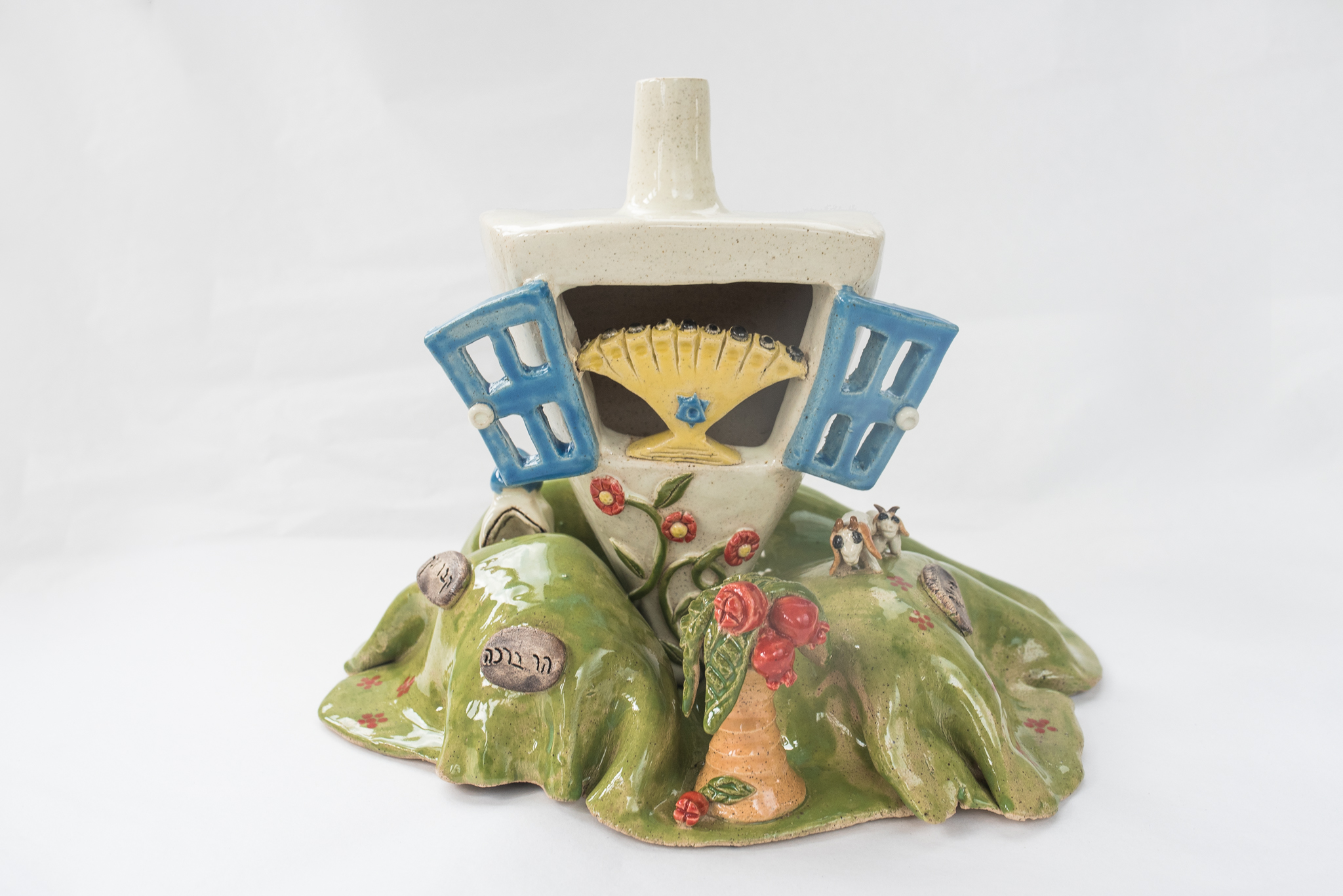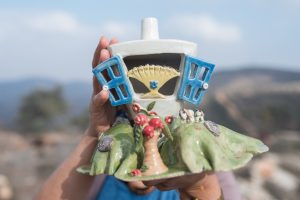For me, dreidels are personal.
In years gone by, I have been a rabbi, a teacher, a principal, a rebbi, I have been a lecturer, a communicator. I have been so many things. Looking back at my life is sometimes like looking through an old photograph album. There are times I hardly recognize the man in the photographs as me. But there is one “photograph”, one image of me that I continue to embrace, one title that I still carry and likely will until the end of my days. I am still the “Dreidel Rabbi”.
Dreidel Rabbi? Yes, that’s me. I might walk into the lobby of one of Jerusalem’s most prominent hotels only to have a stranger approach me and ask, “Aren’t you the Dreidel Rabbi?” I can be walking along the street and someone is sure to ask me about my dreidels. Five or six years ago, my photograph graced the cover of Mishpacha – my photograph with a giant, wooden hand-carved Peruvian dreidel. Two years ago, CBS’s “Sunday Morning” came to our home to showcase my dreidels. Countless dreidels seen by millions of people!
Even a non-Jewish repairman who came to the house exclaimed, “I saw you on TV with those miracle toys!”
Miracles, yes. Toys? No. They are real. Whether small and simple or large and elaborate, they are very, very real and they speak to the essence of our lives.
If only we allow ourselves to listen.
* * *
It’s a curious thing, my being the Dreidel Rabbi. I rarely spin a dreidel. I never play with one. Never did. I cannot recall even having a dreidel as a child. Never sat in a circle, spinning the delightful dreidel, hoping to land on a gimmel so that I could collect some gelt.
My dreidel collection is relatively new, only sixteen years old. Starting it, and appreciating the fullness of what a miracle might be, with a single dreidel when I met my wife, Clary. To have such a miracle in my life! And for the miracles to continue! Now, our collection is said to be among the world’s largest and finest.
But why dreidels – and why so many?
For me, dreidels – simple or elaborate, silver, wooden, ceramic, or mortar shell – speak not only of miracles but, most importantly, of the presence of miracles all around us. Every day. Everywhere.
Is there a soul alive who is not surrounded by miracles from the moment he opens his eyes in the morning until he closes them again at night? Indeed, isn’t our awakening each morning a miracle in and of itself, repeated over and over and over again, so that our lives can continue to spin. A great miracle happens po – a great miracle happens here. Over and over and over again.
It is so for individuals and it is so for us as a people. Is there a greater miracle we can point to in our time than the rebirth of the State of Israel and then again, in 1967, when in six days, miracles were evident in Jerusalem, Beit Lechem, Chevron, Beit El, Itmar – names synonymous with our people in ancient times, po, and then again before our very eyes.
As I get older, and the pages of those “photograph albums” of my life grow in number, I feel sadness for those unable to appreciate the miracles all around them. I value and embrace those who see what I see in the spinning dreidels – the truth of miracles all around us.
* * *
Basic to Judaism is that the most important elements of our belief system require concrete expressions. So many of the mitzvot we observe are concrete manifestations of that which is the fabric of our faith. Tefillin, mezuzah, the sukkah, matzah … all give us something that we can touch that speaks to the miraculous in our lives.
But it is so hard for us to conceive of the miracle of Sinai, Esther’s intercession, the freeing from bondage, the Hand of God reaching out to us. How can we ever embrace that miracles are all around us? What better way than a spinning top?
God is here. Miracles are here.
* * *
There are others who know that miracles are all around us. Batya Erdstein is one such person. She is a ceramic artist and, curiously, the sister to Tally, a daughter-in-law (such “Jewish geography” is another kind of miracle!) And she sees the miracle all around her as she looks out the window of her home in Itamar, Israel. She has created a dreidel for me that speaks to these miracles.
Batya lives on the mountains around Itamar with her husband, Baruch, and their six children. This dreidel rests in a stand she formed featuring the topography of the Shomron, overlooking Shechem and the Tomb of Joseph. This dreidel celebrates the optimism of Jewish independence both during the days of the Maccabees as well as in our own times.
The Torah portion telling the story of Joseph is usually read during the Hanukah season attesting to the spiritual power of Joseph, a shining example of holiness overcoming spiritual darkness.
The dreidel sits in the center of three mountains, Har Bracha, Itamar and Har Eival. The mountains of the blessing and curse. The pomegranate tree symbolizes the physical blessings of abundance and fruitfulness renewed in this area. The goats show the revival of agriculture and farming that prove Jewish existence returning after a long exile.
In this marvelous creation, she has formed for me a brilliant expression of the miracle she and her neighbors are witness to each day when they look out their windows, exhibited by this dreidel’s open window; she has created a dreidel which attests to the truth of continuing daily miracles.
This dreidel, like all my many others, spins and in its spinning, cries out the powerful message, open your eyes and you will soon discover the miracles all around you!
Yes, miracles are otherworldly and awe inspiring. They are also less than an arm’s length away. They are personal. They are real.
* * *
Batya is the unique artist who can transform the accessibility of miracle and make it a concrete object. Visit her website to see the many other beautiful things she makes. Perhaps she will make for you a unique and precious product born of miracles, as she did for me.
In the meantime, always remember neis gadol haya po/sham. A great miracle happened there. A great miracle happens here. Every day.


